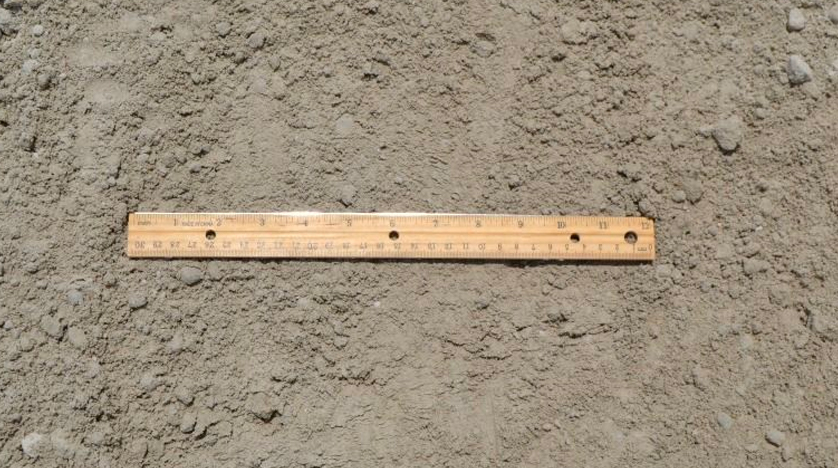
Posted September 8, 2015
Category(s) Industry News

Got soil woes? If so, you’re not alone. Whether you’re working on reviving an unhealthy lawn or your fields need some TLC after multiple growing seasons, you need to find a solution if you want to have any hopes for thriving plants.
For many people, this means either working with agricultural lime (sometimes referred to as aglime) or dolomitic lime.
These all-natural stone products have proven themselves to be to be invaluable to the agricultural industry, as well as in residential applications throughout the centuries.
Nevertheless, even though both materials have been around for a long time, there is still a lot of confusion about which should be used for what purposes and when.
Because we receive so many inquiries from customers like yourself, we’ve taken the time to assemble this definitive guide to choosing between agricultural limestone vs dolomite.
Before you can even begin to think about whether agricultural lime or dolomite could benefit your soil, you first need to have an understanding of when these materials are actually necessary.
Aglime and dolomite both become useful when soil becomes too acidic. This typically occurs after exposure to acid rain, after frequent use of fertilizers and other chemicals or even after the soil has simply become deprived of important nutrients from years of planting and harvesting crops.
Additionally, because lime and dolomite are alkaline, they help to raise the soil’s pH back to a level that is conducive to growing plants. Regardless of whether or not you suspect that your soil may be too acidic, it’s always a good idea to have a sample of the dirt tested on an annual basis.
For larger, commercial fields, it’s generally advisable to send a sample off to a professional testing company for a readout. Homeowners however can usually get away with purchasing a home testing kit. Once you’ve concluded that your soil’s pH needs to be elevated, you should start considering the right solution for your needs.
Mostly everyone in the agricultural industry has heard of aglime. The production and usage of agricultural lime is very simplistic in nature. Limestone is harvested from a quarry and then pulverized down to a very fine particle size.
The material is then spread atop or tilled into soil that has a pH level that is too low (acidic) for healthy plant and crop growth. The reasoning behind this is that limestone contains a high volume of calcium.
Because calcium is alkaline, it helps to raise the soil’s pH level and restore it to a balance. Agricultural lime is available in crushed form, pelletized form and in liquid form. It’s always a good idea to talk to a trusted industry professional about which type is right for your needs.
Dolomitic Lime (often referred to as dolomite) is slightly different from agricultural lime. This particular material is manufactured by way of crushing dolomitic limestone into fine particulate matter.
Because it is a type of limestone, you can count on the fact that it will also contain a very high calcium content. The alkaline nature of the material makes it possible for acidic soil to be returned to a more balanced state as the dolomite raises the pH level.
The difference between dolomite and regular aglime, though, is that dolomite also contains magnesium carbonate. You can generally expect dolomite to be 50% calcium carbonate, 40% magnesium carbonate and a 10% blend of other minerals.
his makeup is what allows dolomite to work on the soil’s pH while also introducing magnesium into the earth in order to offer nutritional value to plants.
You’ll find that aglime offers a number of benefits to users, but there are also things you should consider prior to use:
Like aglime, Dolomite usage can be very advantageous but comes with its own set of considerations:
When it comes to making the decision between agricultural limestone vs dolomite, there is no real black and white answer. Instead, the choice should be made based upon a thorough understanding of each material and knowing what is better suited to your needs.
A simple test of both the pH level and mineral content of your soil will tell you whether aglime will be sufficient or if you should consider dolomite.
Braen Stone is the leading supplier of aglime throughout NJ and its surrounding areas. We have owned and operated our own local quarries for more than 110 years and take pride in producing the highest quality liming materials possible.
Our expert staff has the knowledge and experience required to provide you with input when choosing agricultural limestone so that you walk away feeling confident that you’ve selected the right material for your specific needs.
You’ll find that we offer agricultural limestone at competitive wholesale prices. Our agricultural limestone can be picked up or bulk delivered to locations throughout parts of NJ, NY, PA and CT.
VIBRATION CONCERNS SUPPORT NUMBER
973-720-7094
Thank you! Your form was submitted successfully.
There has been an error submitting your form.